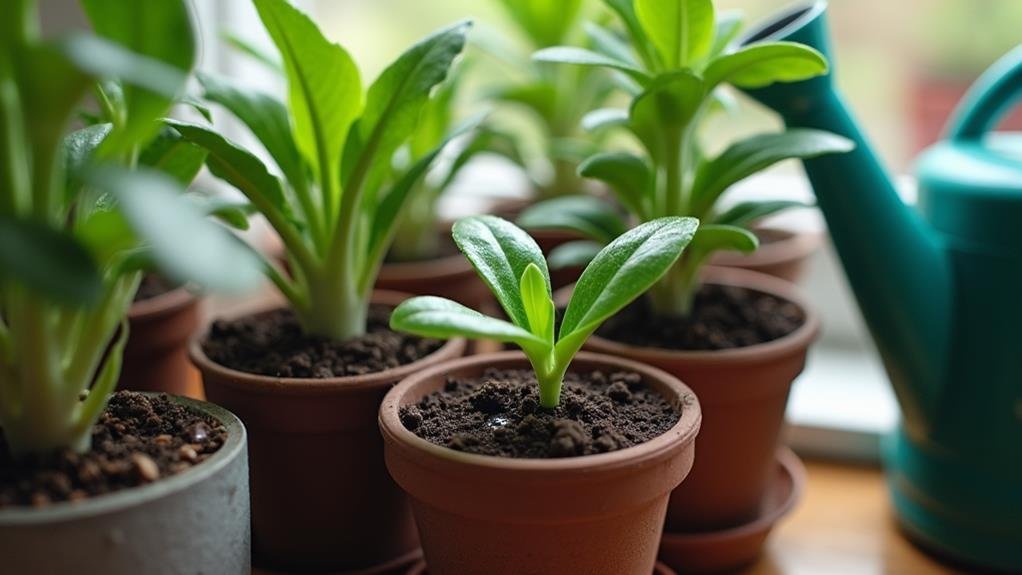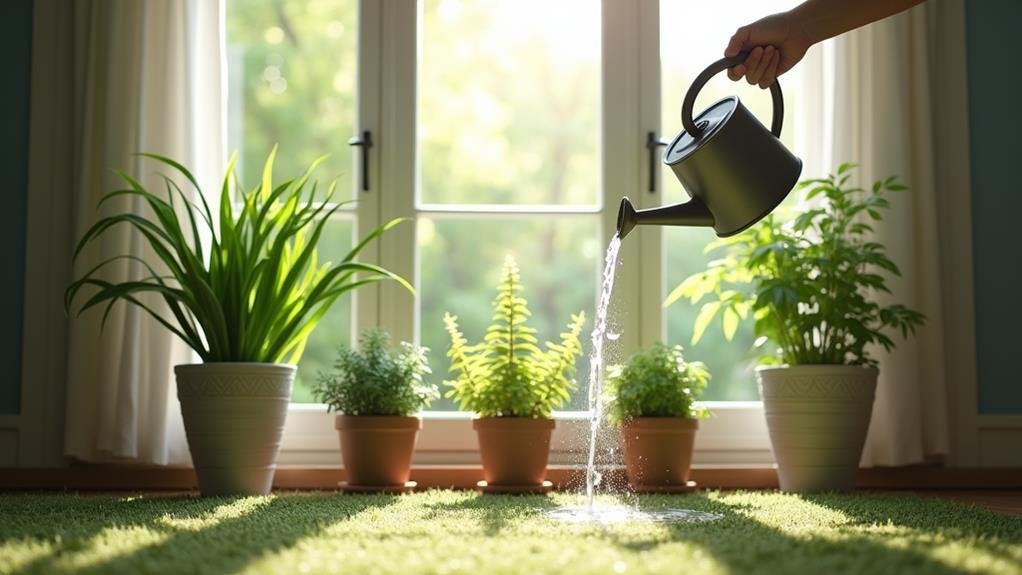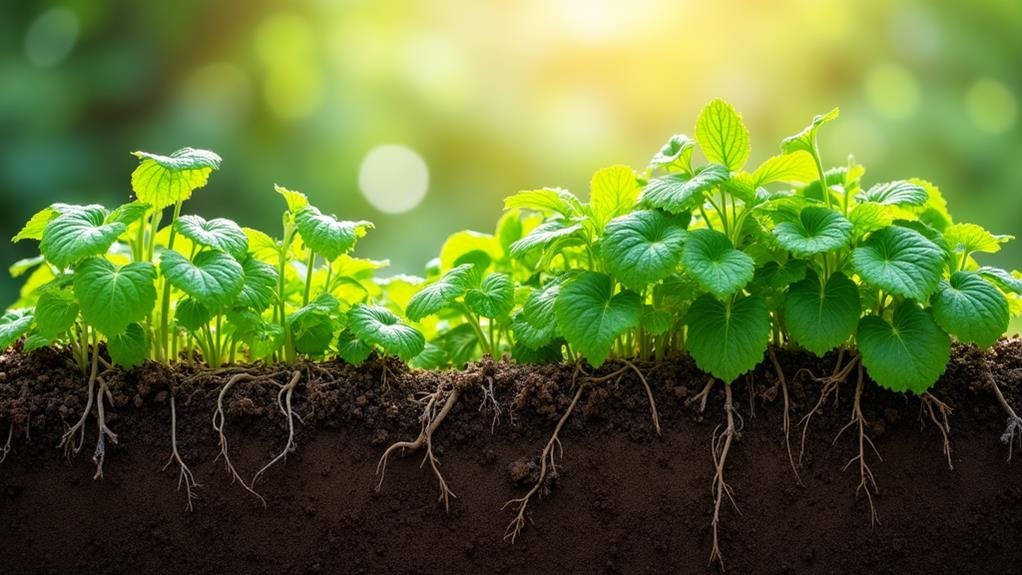Regarding indoor plant care, understanding how to water properly can make all the difference. You need to take into account each plant's unique water requirements, as not all thrive on the same routine. Establishing a consistent schedule is essential, but it's just as important to keep an eye on soil moisture levels. Neglecting these factors can lead to issues that may surprise you. So, what are the best practices to guarantee your plants flourish without drowning or drying out? Let's investigate the top three tips that can transform your approach to indoor plant watering.
Understand Plant Watering Needs

Understanding your indoor plants' watering needs is essential for their health and vigor. Each plant species has specific requirements, which can vary widely. For instance, succulents and cacti thrive in dry conditions and need less water, while ferns prefer a consistently moist environment.
You'll want to research the needs of your particular plants, as this knowledge sets the foundation for productive care.
One key factor to evaluate is the size of the pot. A larger pot can retain more moisture, meaning it may take longer for the soil to dry out. On the other hand, smaller pots can dry out quickly, demanding more frequent watering.
Additionally, factors like temperature, humidity, and light levels in your home can influence how fast the soil dries.
To gauge when to water, stick your finger about an inch into the soil. If it feels dry, it's time to water. If it's still damp, hold off for a while.
Develop a Consistent Schedule
Creating a consistent watering schedule is essential for maintaining the health of your indoor plants. When you establish a routine, you help your plants thrive and reduce the risk of over- or under-watering.
Start by choosing a specific day each week to check on your plants. This way, you won't accidentally forget about them in the hustle and bustle of daily life.
Consider the needs of each plant; some may require more frequent watering than others. For instance, succulents generally need less water, while tropical plants might enjoy a more regular soaking.
You can jot down your watering schedule in a planner or set reminders on your phone. This will keep you accountable and guarantee you're giving your plants the attention they need.
If you've got a variety of plants, grouping them by their watering needs can simplify your routine. This way, you can tend to similar plants at the same time, making your schedule more efficient.
Monitor Soil Moisture Levels

Check the soil moisture levels regularly to guarantee your indoor plants get the right amount of water. This simple practice can prevent both overwatering and underwatering, which are common mistakes many plant owners make. You can use a moisture meter for precise readings, or just stick your finger about an inch into the soil. If it feels dry, it's time to water; if it's still moist, give it a little more time.
Keep in mind that different plants have different moisture needs. Some thrive in drier soil, while others prefer consistently moist conditions. Be familiar with your specific plants to tailor your watering routine accordingly.
Another tip is to observe the leaves of your plants. If they're drooping or yellowing, it could be a sign of over or under-watering. You'll get to know their signals with a bit of practice.
Lastly, take into account that environmental factors, like humidity and temperature, can affect how quickly the soil dries out. With consistent monitoring, you'll guarantee your indoor plants stay healthy and vibrant, making your space a little greener and more enjoyable.
Happy watering!
Conclusion
By following these three essential watering tips, you'll keep your indoor plants thriving and healthy. Remember to understand each plant's specific needs, stick to a consistent watering schedule, and regularly check soil moisture levels. With these practices, you can avoid the common pitfalls of overwatering and underwatering. Your plants will thank you by flourishing, and you'll enjoy a vibrant indoor garden that brightens your space. So grab that watering can and get started on your plant care journey! And if you’re unsure about the proper watering tips for a specific plant, don’t hesitate to do some research or consult with a knowledgeable garden center. Proper watering is crucial for the overall health and happiness of your indoor plants, and investing the time to learn the best practices will pay off in the long run. So, don’t be afraid to ask for advice and continue honing your watering skills to become a pro plant parent!




